Input interpretation

1-pentyn-3-ol
Chemical names and formulas
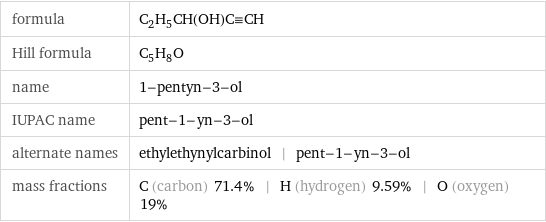
formula | C_2H_5CH(OH)C congruent CH Hill formula | C_5H_8O name | 1-pentyn-3-ol IUPAC name | pent-1-yn-3-ol alternate names | ethylethynylcarbinol | pent-1-yn-3-ol mass fractions | C (carbon) 71.4% | H (hydrogen) 9.59% | O (oxygen) 19%
Lewis structure
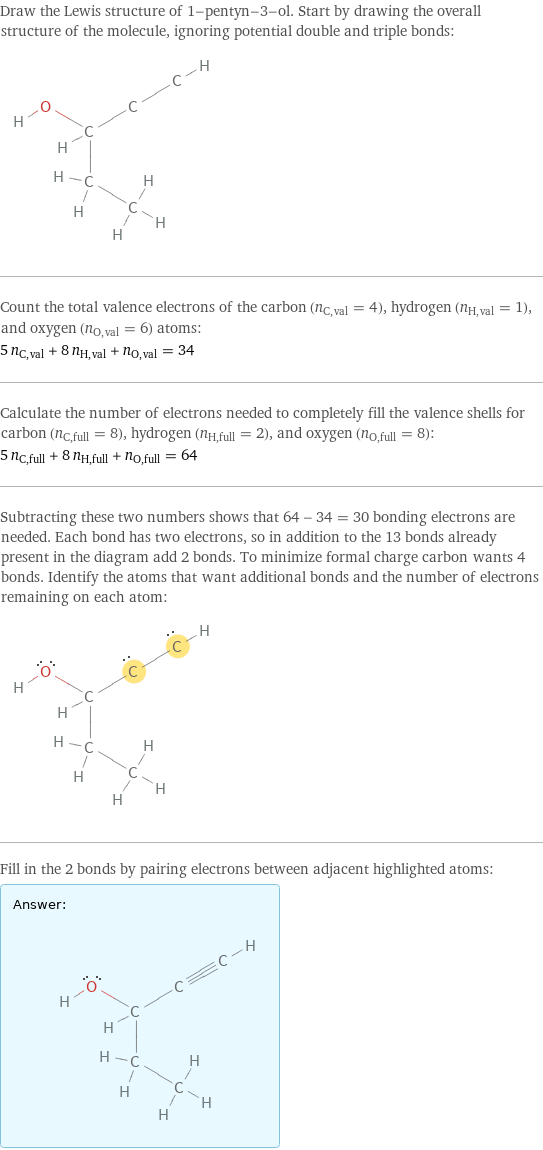
Draw the Lewis structure of 1-pentyn-3-ol. Start by drawing the overall structure of the molecule, ignoring potential double and triple bonds: Count the total valence electrons of the carbon (n_C, val = 4), hydrogen (n_H, val = 1), and oxygen (n_O, val = 6) atoms: 5 n_C, val + 8 n_H, val + n_O, val = 34 Calculate the number of electrons needed to completely fill the valence shells for carbon (n_C, full = 8), hydrogen (n_H, full = 2), and oxygen (n_O, full = 8): 5 n_C, full + 8 n_H, full + n_O, full = 64 Subtracting these two numbers shows that 64 - 34 = 30 bonding electrons are needed. Each bond has two electrons, so in addition to the 13 bonds already present in the diagram add 2 bonds. To minimize formal charge carbon wants 4 bonds. Identify the atoms that want additional bonds and the number of electrons remaining on each atom: Fill in the 2 bonds by pairing electrons between adjacent highlighted atoms: Answer: | |
3D structure
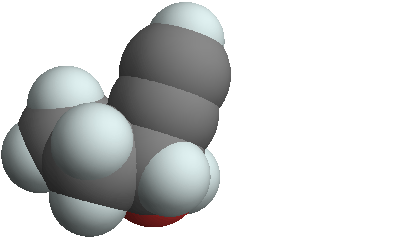
3D structure
Basic properties
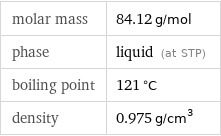
molar mass | 84.12 g/mol phase | liquid (at STP) boiling point | 121 °C density | 0.975 g/cm^3
Units

Liquid properties (at STP)

density | 0.975 g/cm^3 refractive index | 1.434
Units

Chemical identifiers
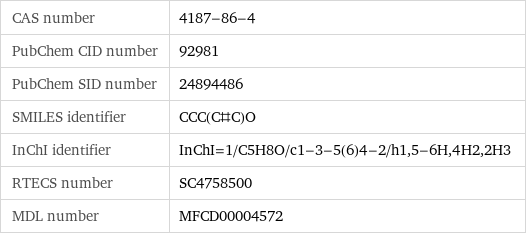
CAS number | 4187-86-4 PubChem CID number | 92981 PubChem SID number | 24894486 SMILES identifier | CCC(C#C)O InChI identifier | InChI=1/C5H8O/c1-3-5(6)4-2/h1, 5-6H, 4H2, 2H3 RTECS number | SC4758500 MDL number | MFCD00004572
NFPA label

NFPA label
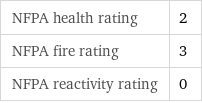
NFPA health rating | 2 NFPA fire rating | 3 NFPA reactivity rating | 0
Safety properties

flash point | 29.44 °C

DOT hazard class | 3 DOT numbers | 1987
Toxicity properties

RTECS classes | drug